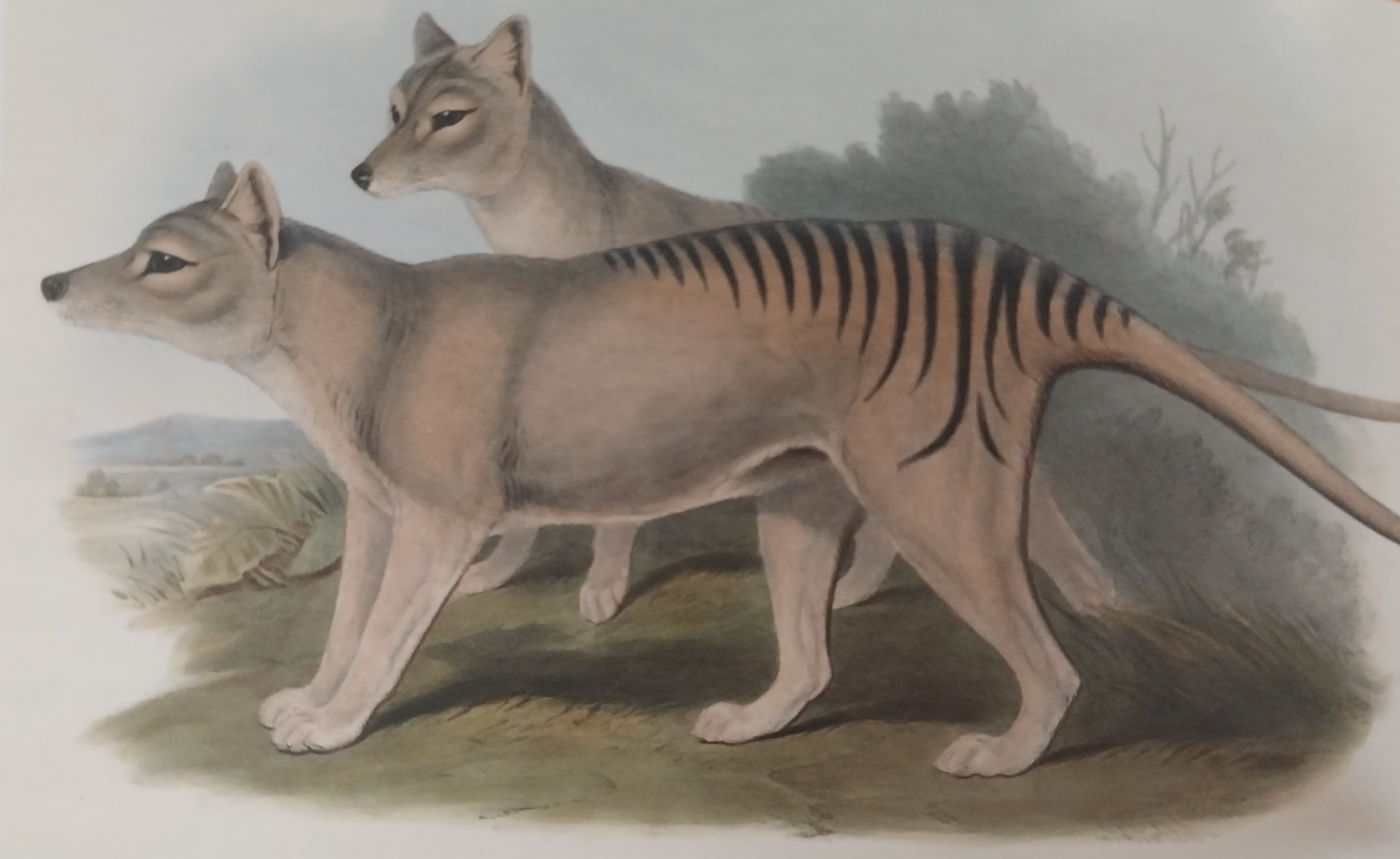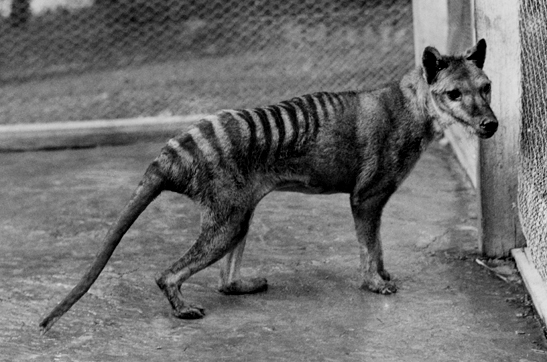Thylacine
/ˈθaɪləsin/ n. Thylacinus cynocephalus, a carnivorous marsupial resembling a wolf and native to Tasmania, with tan fur accented with black stripes across its back. Commonly known as the Tasmanian wolf or Tasmanian Tiger, this name derives from the Greek word 'thylakos', meaning pouch.[1]
The Thylacine, also known as the Tasmanian Tiger, offers a captivating tale in natural history. Though smaller than some of its ancient relatives, like the Thylacinus Potens found in Alcoota, north-east of Alice Springs. It played a significant role in its ecosystem, When Europeans arrived in Tasmania, the Thylacine faced a tough time. Its habit of hunting sheep led to efforts to get rid of it. People offered rewards for Thylacine skins, which led to a quick decline in their numbers. Within a mere eighty years, Thylacines became a rarity in Tasmania. The last known specimen in captivity passed away in 1936. While there are speculations about the potential existence of surviving Thylacines, no confirmed sightings have been reported. However, the demise of the Thylacine cannot be solely attributed to European settlers.
Once widespread across Australia,

evidence of the marsupial 'tigers' with their distinctive stripes can be found as far north as Kakadu in ancient rock art. During the Pleistocene epoch, the Thylacine's habitat gradually contracted, likely due to factors such as climate change or competition with the Dingo, which arrived on the continent around four thousand years ago. By the end of the Pleistocene, Thylacines were confined to the southern regions, eventually becoming isolated in Tasmania due to rising sea levels in Bass Strait. Another notable carnivorous mammal of the Pleistocene was the Tasmanian Devil (Sarcophilus laniarius). Though larger than their modern counterparts, weighing up to eighteen kilograms, they were still smaller than Dingoes and cannot be considered as giants.[2]

